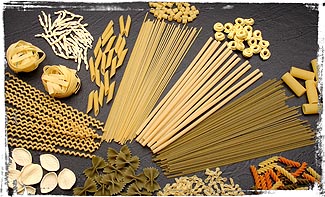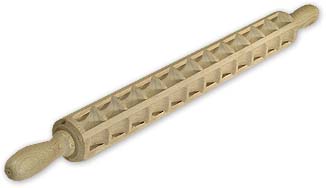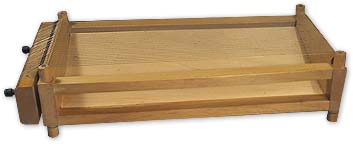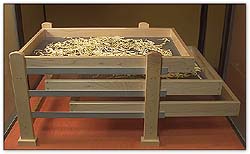 |

 |

How Diversity Enhances Flavour
Italian immigrants brought many elements of their cuisine to North
America. Among them, the one that has known the greatest success
is pasta.
Beneath the apparent simplicity of this product lies immense variety,
reflecting the diversity of local Italian traditions. Generally made
from wheat flour, salt and water, with or without eggs, pasta can be
fresh or dried, long or short, wide or narrow, smooth or ridged. Some
types have holes, while others are stuffed. The tools used to make
pasta at home also vary according to the method employed.
But make no mistake, the variety of techniques and hundreds of shapes
are not just a matter of aesthetics. Each helps enhance a specific
flavour, when combined with the right sauce.

 |
Ravioli-rolling pin
Italy
2002
Wood
Canadian Museum of Civilization |

 |
Chitarra - guitar-like pasta maker
Abruzzi region, Italy
c. 1960
Used in Canada
Wood, metal
Lent by Vilma Ricci |
 |
 |
Pasta-drying screens
Made by Giorgio Bortot
Canada
2002
Wood, plastic, metal
Giorgio Bortot invented these pasta-drying screens here in Canada. The
Italian model on which they are based has a fixed frame that makes it
difficult to change the screen. Mr. Bortot designed these with a
detachable frame, so that the screen can be changed quickly and easily.
Today, they are used in Ottawa, in shops that sell fresh pasta. |
|
 |
 |